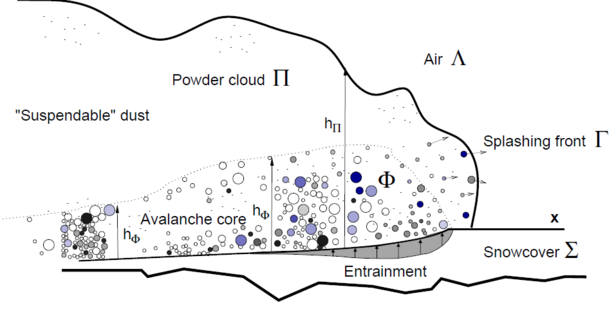
Theory ¶
In the extended model the flowing avalanche core ($\Phi$) consists of clumps and clods of snow (granules); the cloud consists of mixture of air and ice-dust ($\Pi$), see Fig. 1. The core is physically treated as a gravitationally driven, granular shear flow; the cloud is modelled as an inertial, turbulent suspension. Because the snow material in the core is non-suspendable and the ice-dust in the cloud is suspendable, two flow layers exist simultaneously, but with different flow densities ($\rho_{\Phi}$, $\rho_{\Pi}$) and speeds ($\textbf{u}_{\Phi}$, $\textbf{u}_{\Pi}$). The layers are formed by natural segregation because of the large difference in particle sizes – dust (< 1mm) and granules (>1cm) – and therefore settlement speeds.






